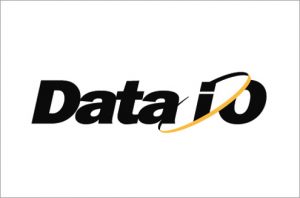Data I/O Corporation – data-IO.com was registered


Date: 11/17/1986
Data I/O Corporation is a manufacturer of programming and automated device handling systems for programmable integrated circuits. The company is headquartered in Redmond, Washington with sales and engineering offices in multiple countries. Data I/O was incorporated in 1969. Before the IBM PC was introduced, the company developed equipment that allowed electronic designers to program the non-volatile semiconductor devices with data stored on punched cards or ASCII-encoded (eight-level) punched paper tape. Over the next three decades the company rode the non-volatile technology wave as Bipolar, EPROM, EEPROM, NOR FLASH, Antifuse, FRAM and most recently, NAND FLASH devices were introduced by semiconductor vendors.
While not manufacturing semiconductors itself, Data I/O’s business is the design and manufacture of equipment that transfers data into various non-volatile semiconductor devices. These devices commonly are Flash Memory, Microcontroller devices and Programmable Logic Devices. Introduced in 2000, Data I/O FlashCORE technology is optimized for programming of NAND and NOR based flash devices and Flash microcontrollers and is sold in FlashPAK, PS-System, FLX500, and ProLINE-RoadRunner programmer models spanning engineering to high-volume offline and inline “just-in-time” manufacturing. Data I/O provides Tasklink for Windows software to set up FlashCORE programmers and specify data sources. In addition, they develop software that manages automated and remote programming, secures data and manages device serialization. Many of these work with TaskLink, while others are independent software packages. Data I/O manufactures two device programmers that can accommodate DIP (through-hole) devices, the Plus-48 and the Optima. Both are aimed at the small, (relatively) low-cost, desktop programmer (engineering) market.
Mass Storage Module
The revisions to the UniSite main board were done to support a new option. Data I/O created the Mass Storage Module (MSM). This consisted of an additional circuit board containing a miniature hard disk drive (either a 2.5 inch PATA/IDE device or a PCMCIA Type III card drive, depending on revision level) and appropriate interface circuitry. All the programmer’s operating software and device algorithms could be transferred to the MSM’s drive in less than a half-hour, obsoleting floppy diskettes. The latest revision is entirely solid-state, consisting of a single large FPGA chip as the board’s glue logic, an SPROM (Serial Programmable Read-Only Memory) chip, containing the FPGA’s operating code, a few SRAM chips for buffering and a solid-state or ‘Flash’ drive. The MSM remains an optional, field-installable module for the 3900 and Unisite. Unisite programmers require 8MB of user RAM and controller board revision 701-2313-00 or higher to utilize this option. In addition, the MSM requires operating software revisions of 6.6 or above.
All 3900 series programmers are MSM-compatible at the hardware level. Successful installation of the MSM in a 3900 programmer automatically turns it into the model 3980. MSM adds another option, a high-speed parallel port interface that supplements the programmer’s serial port. In conjunction with a Windows-based PC, and Data I/O’s TaskLink software, the parallel port greatly enhances the speed of data transfers to and from the programmer. As one example, a 1MB data file takes at least two minutes to be transferred into or out of a Unifamily programmer via the serial port at its highest available speed (19200 baud). The same file, transferred with the parallel port’s help, takes around 30–40 seconds. Any Unifamily programmer with ‘XPi’ after its name (Unisite-XPi, 3980-XPi) already has the MSM and parallel port options installed as standard equipment. These programmers represent the end of the Unifamily line and, although no longer in production, are fully supported.